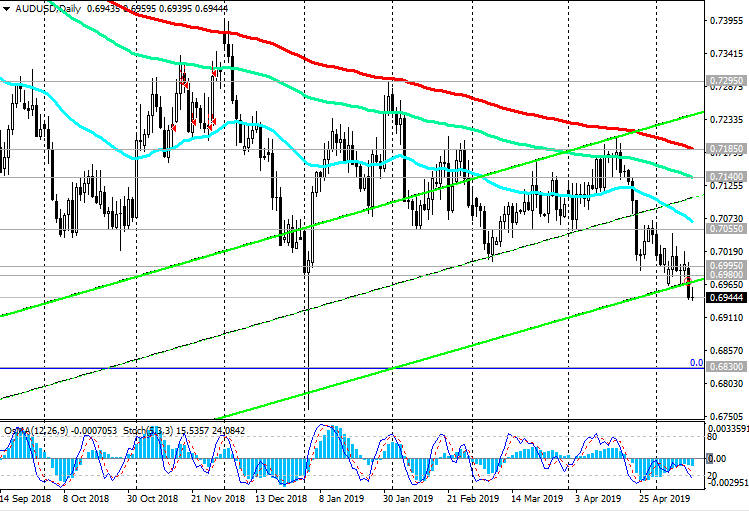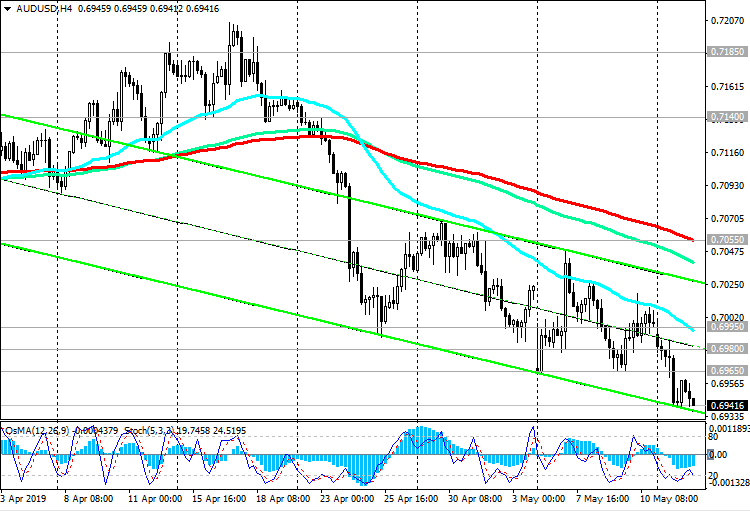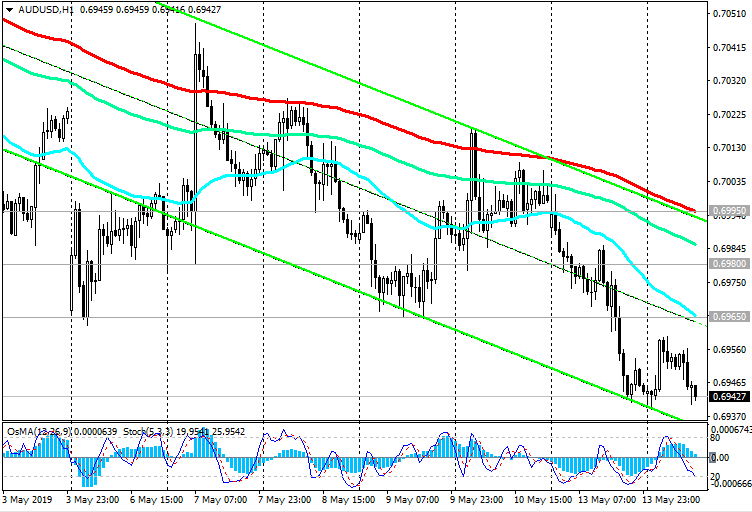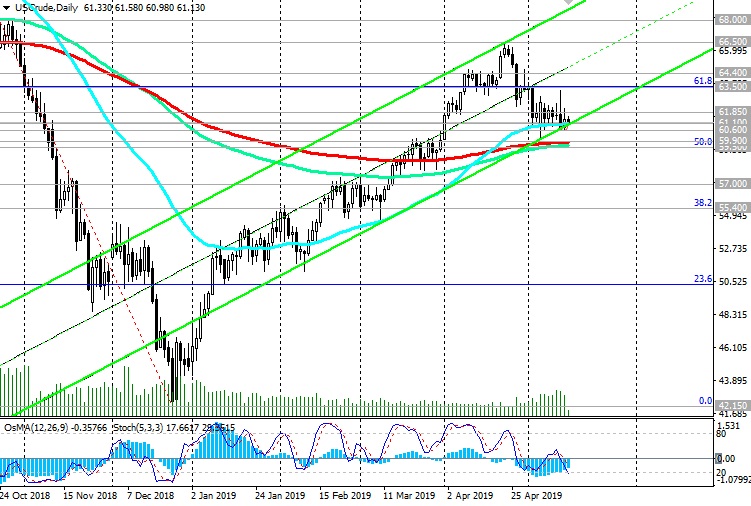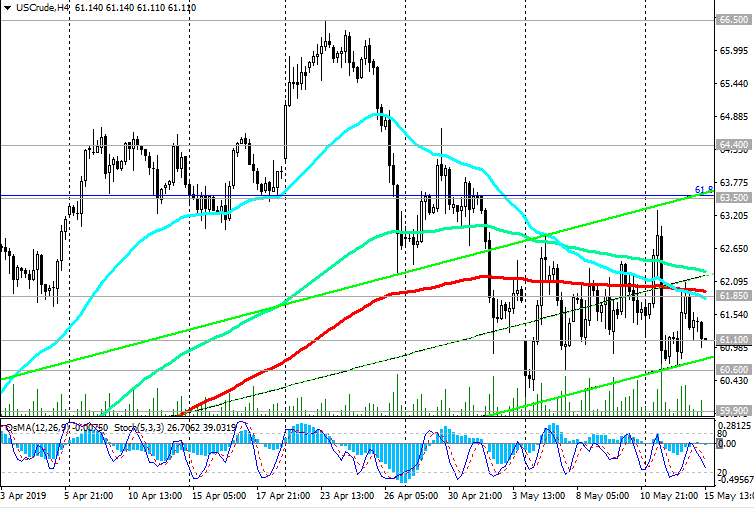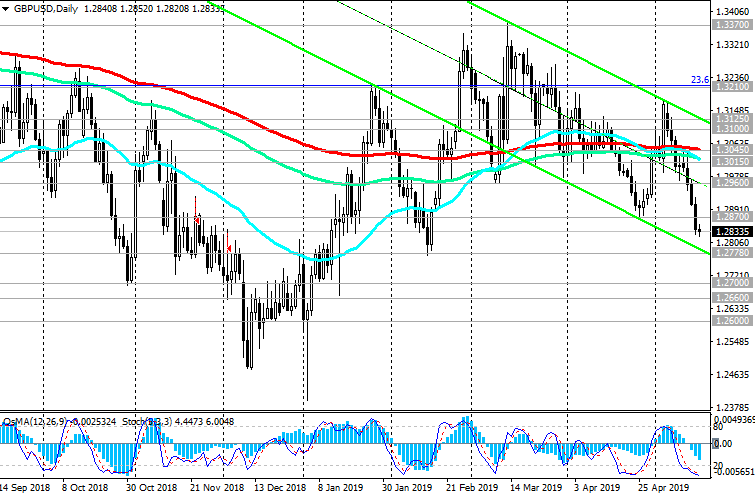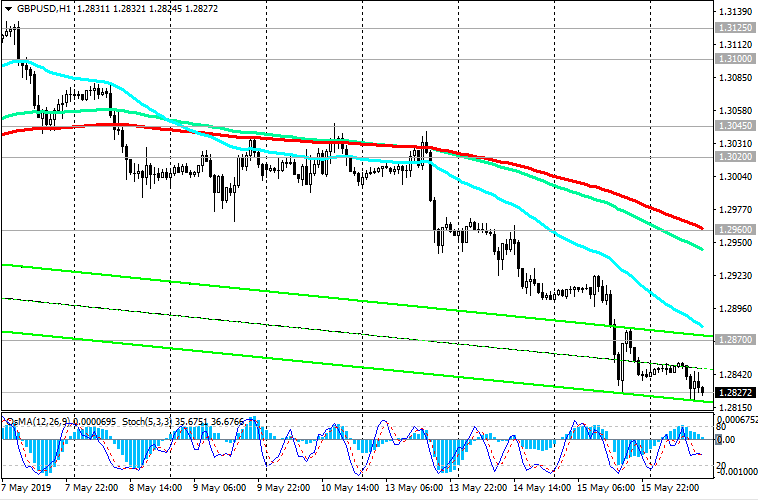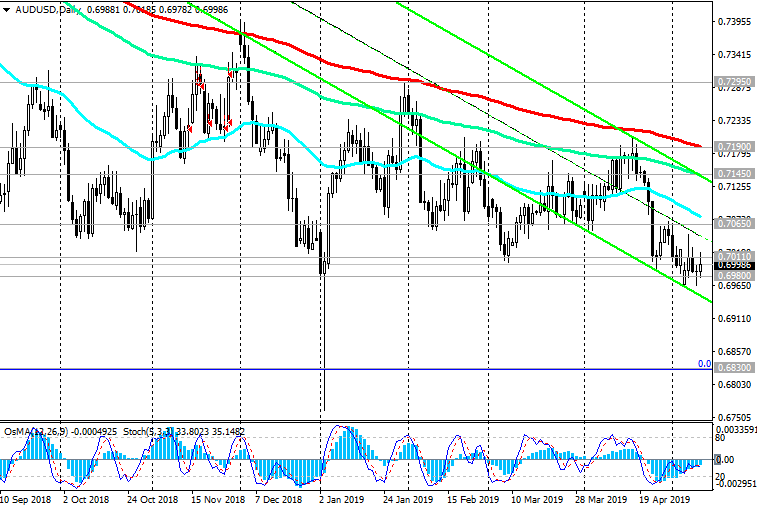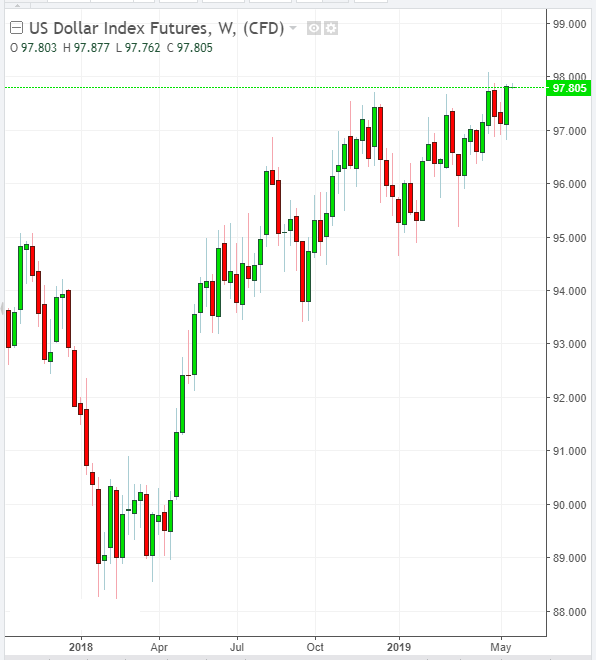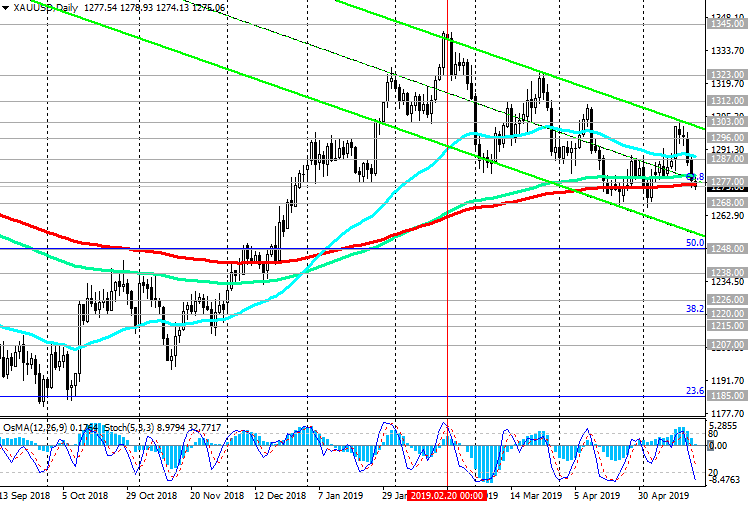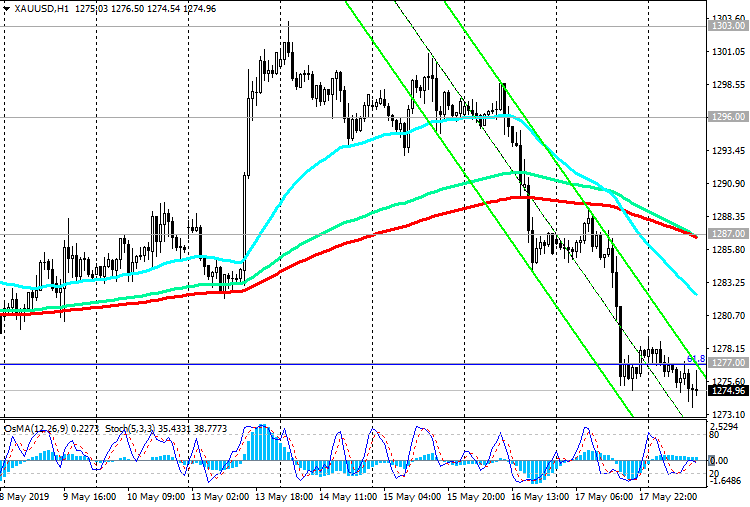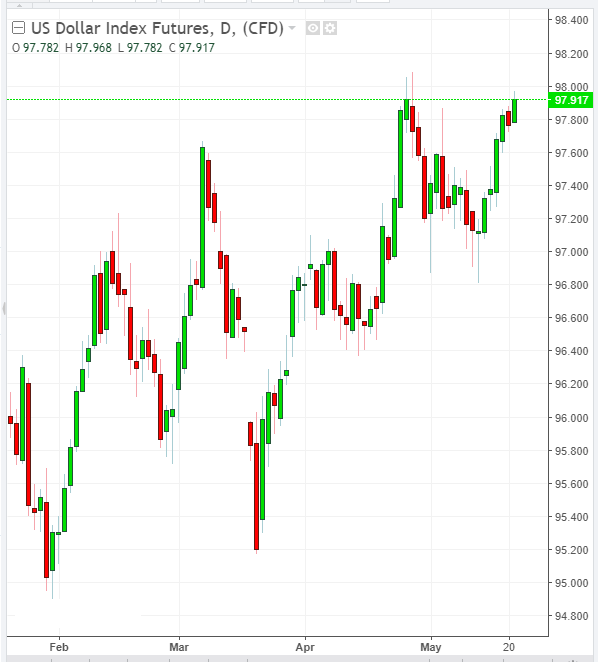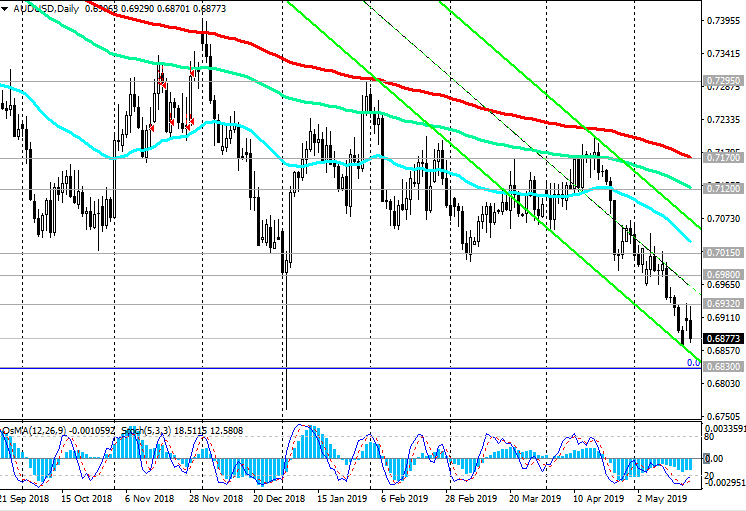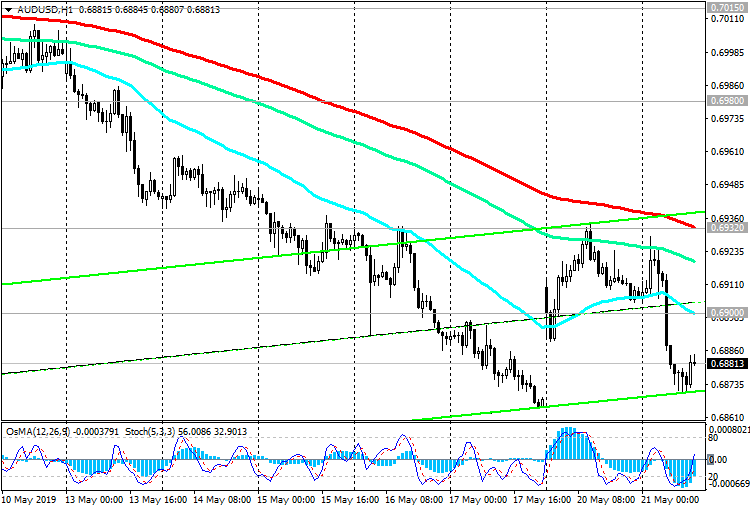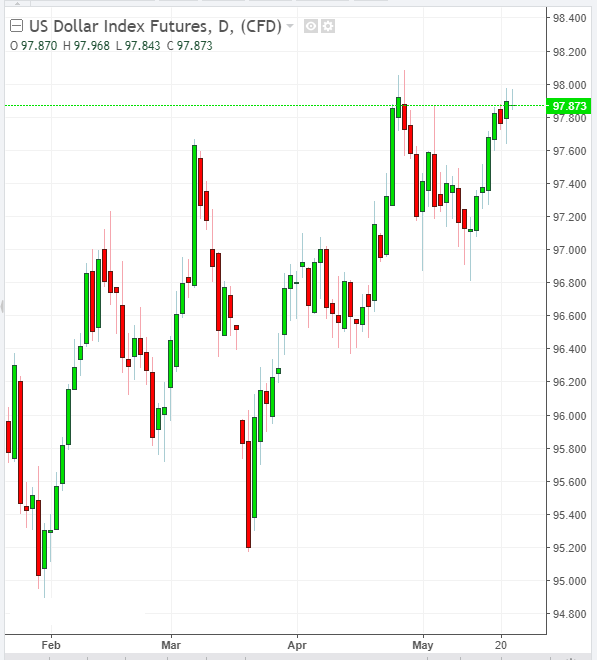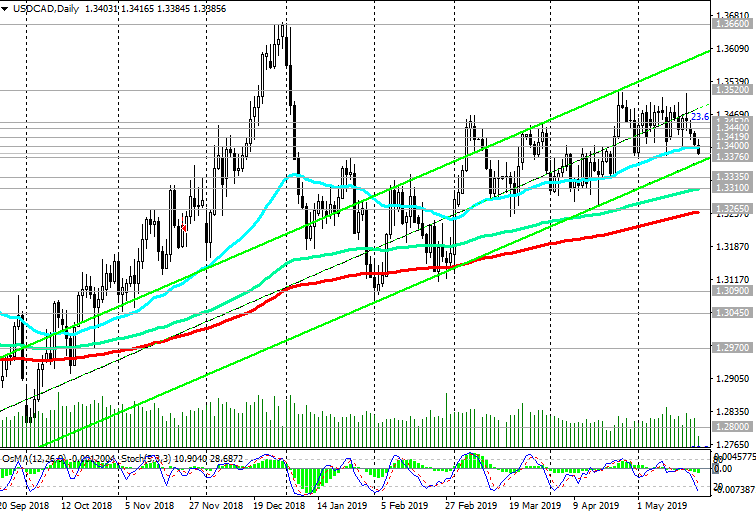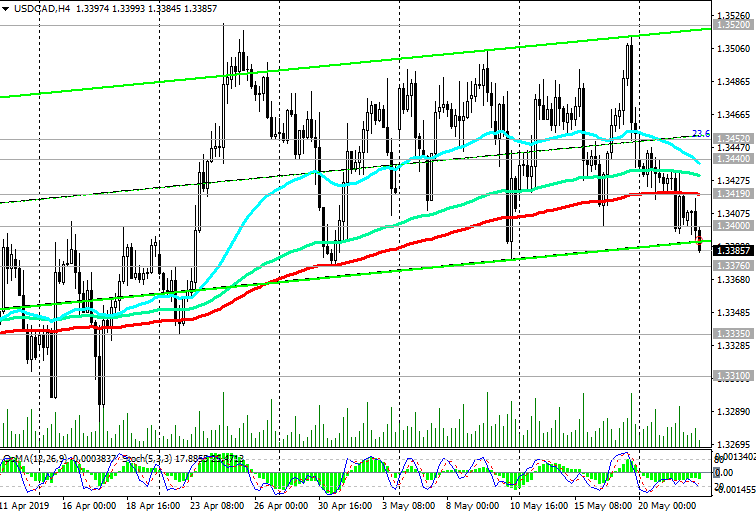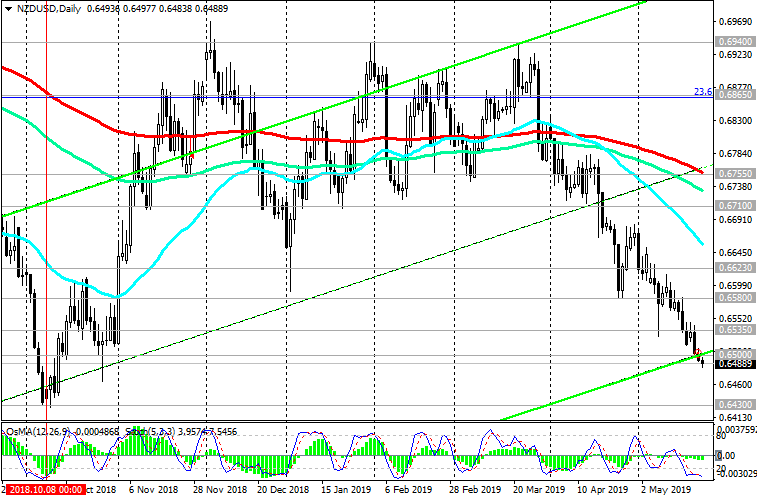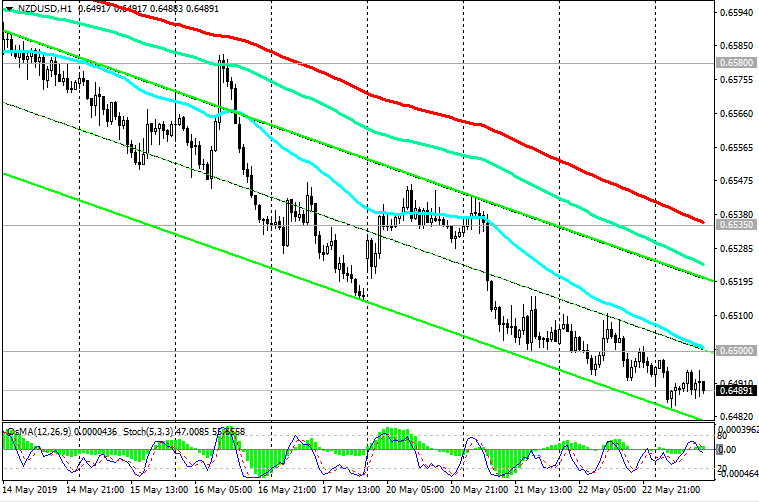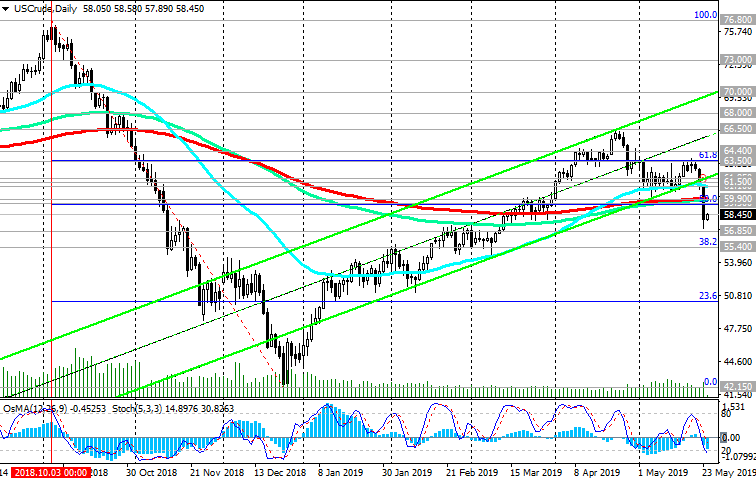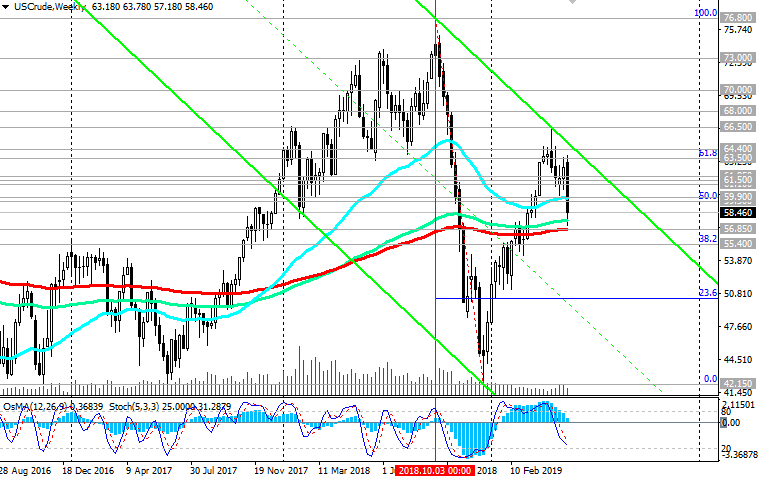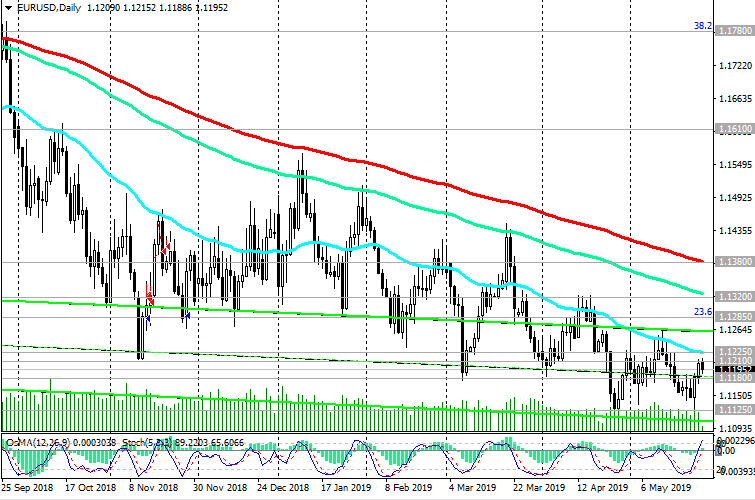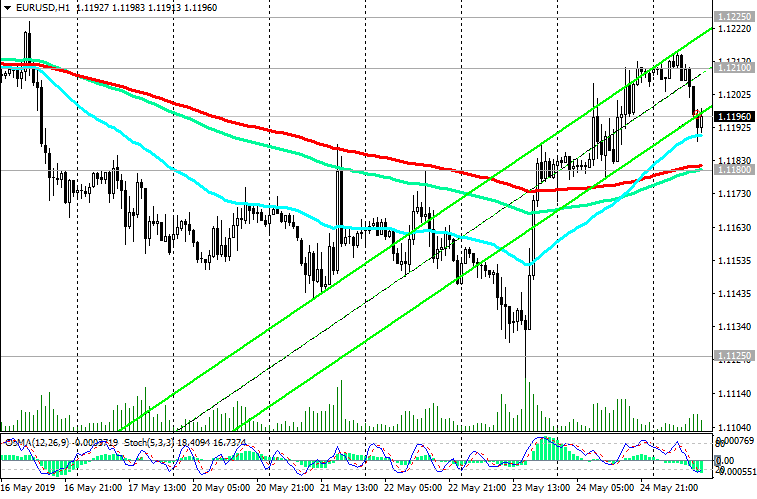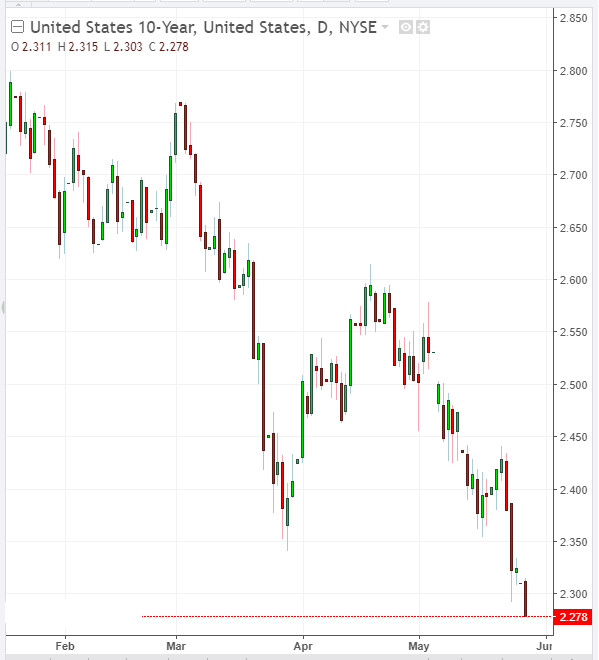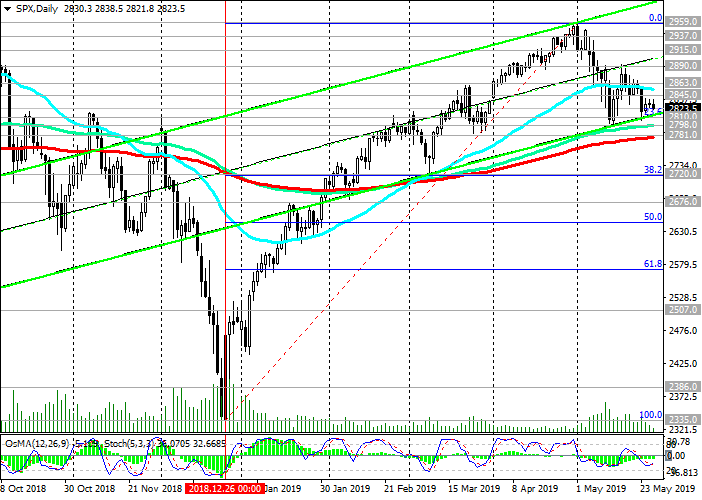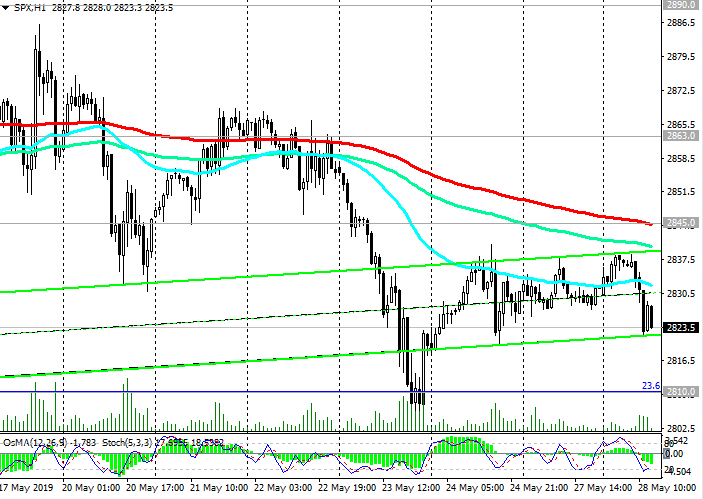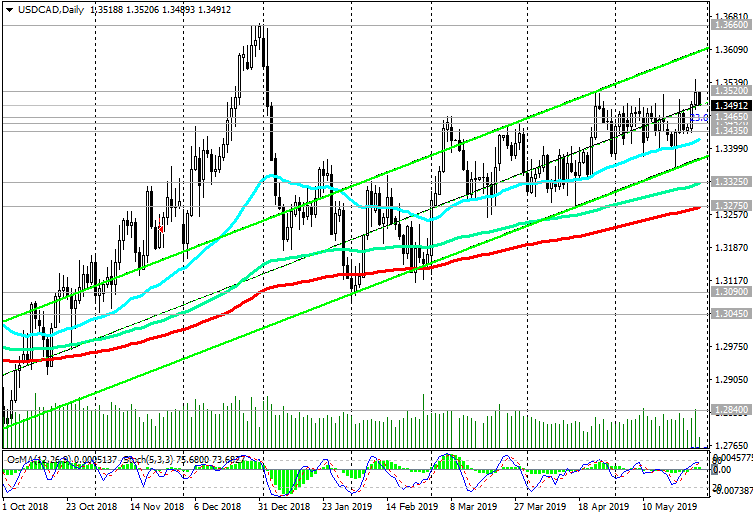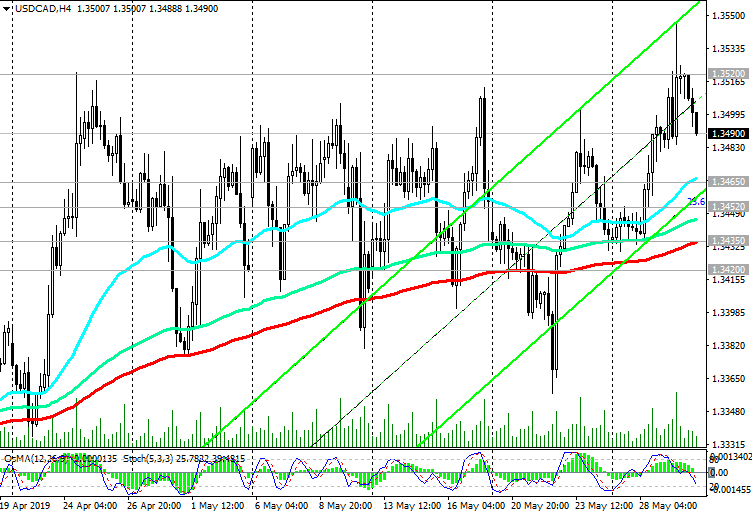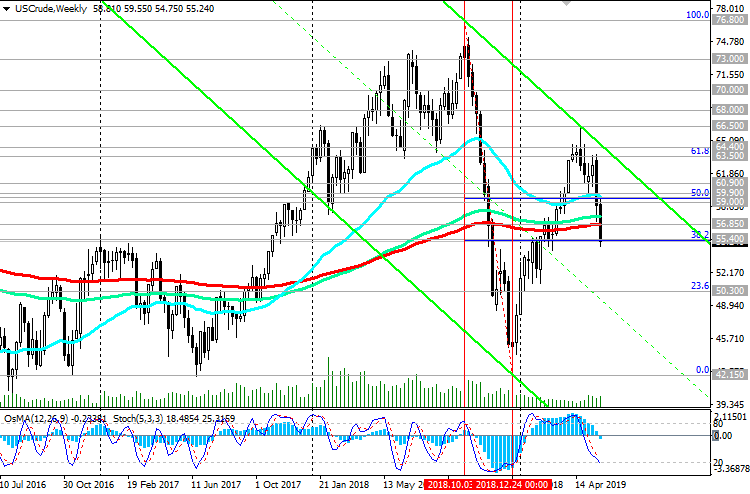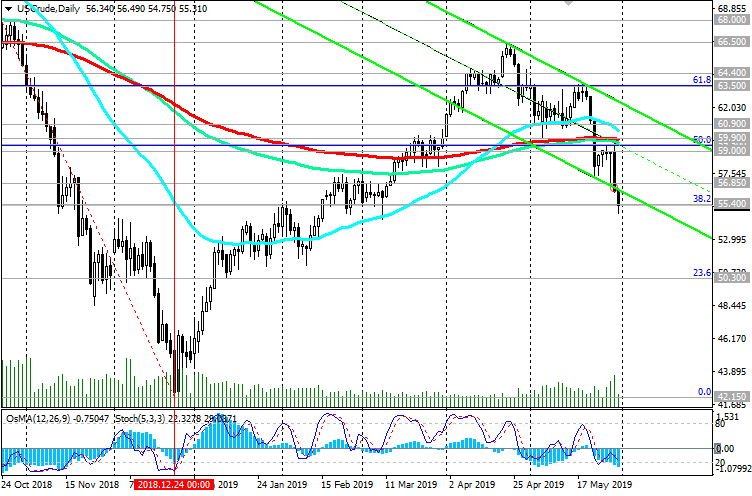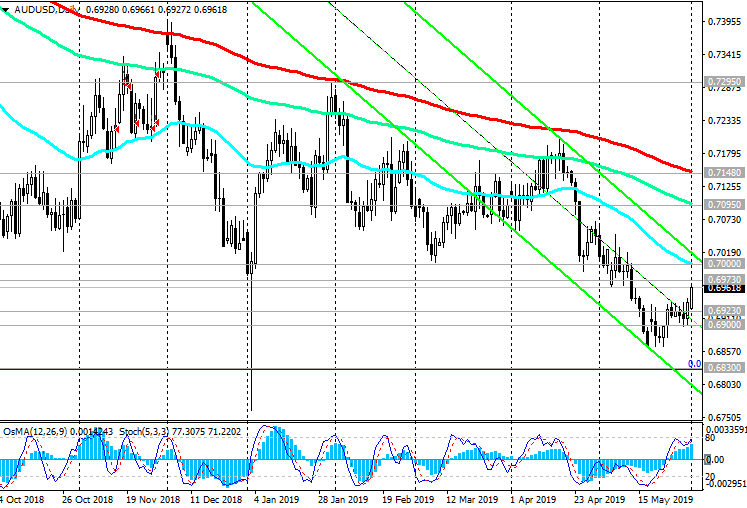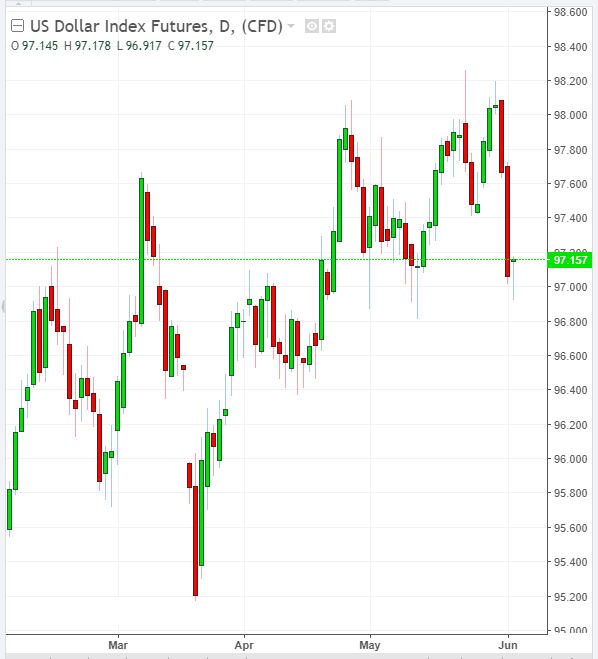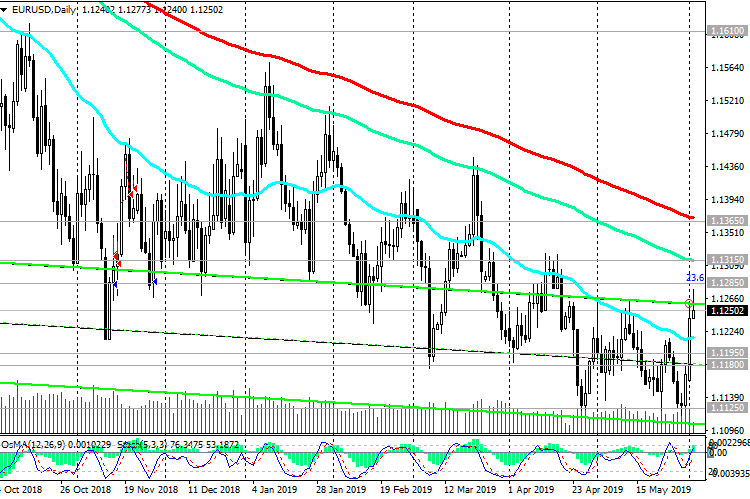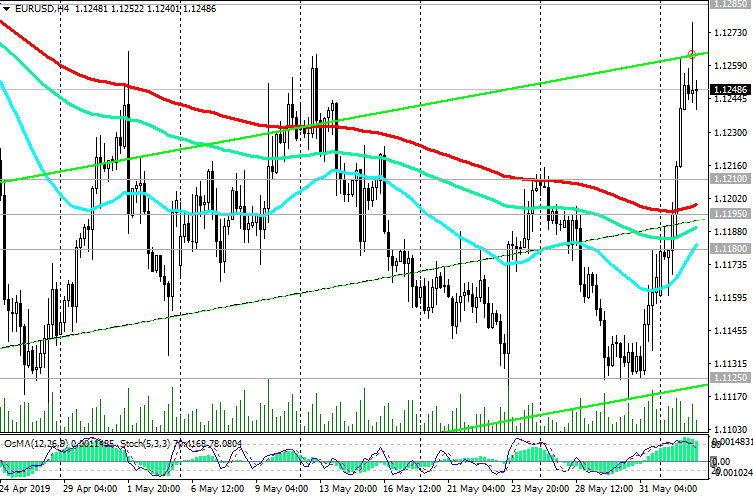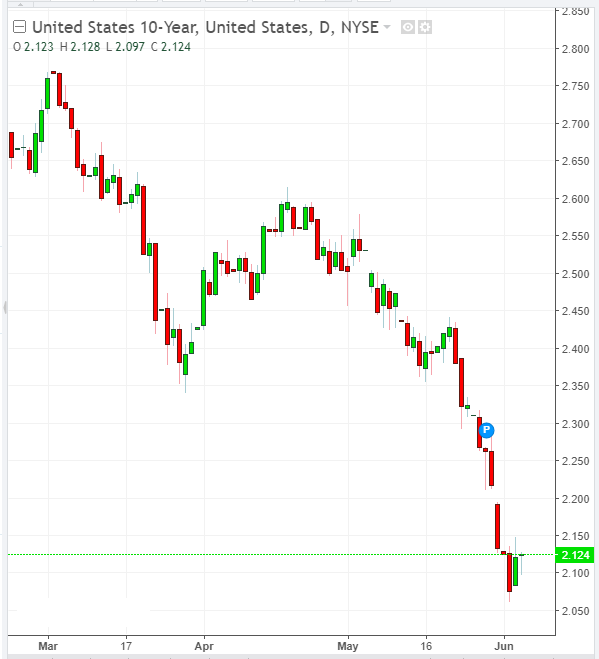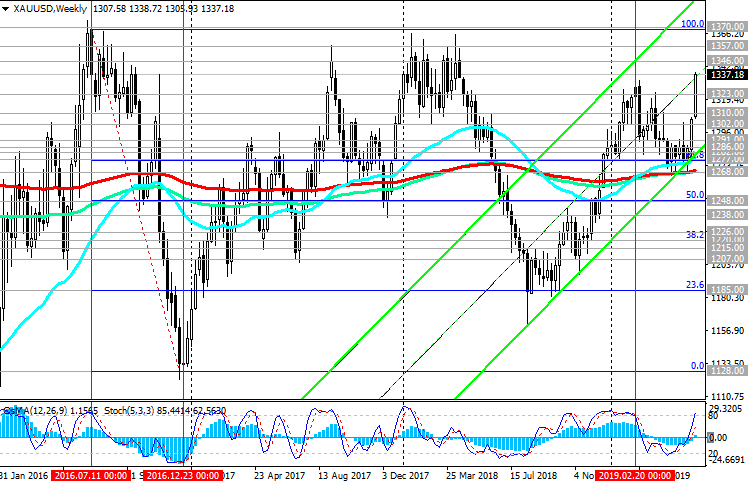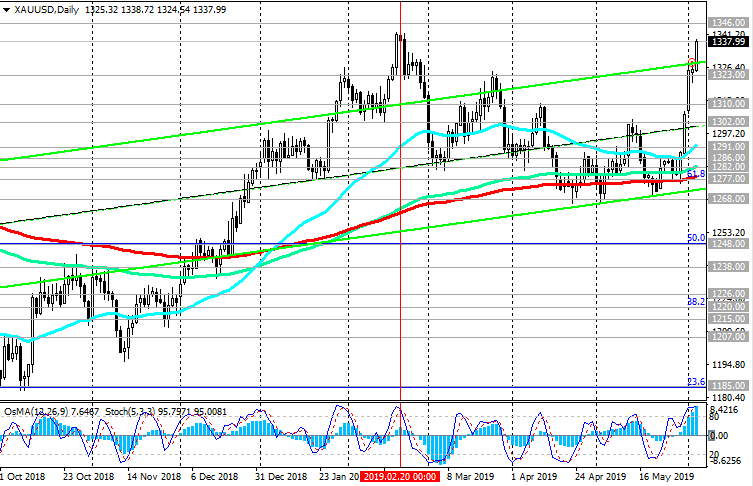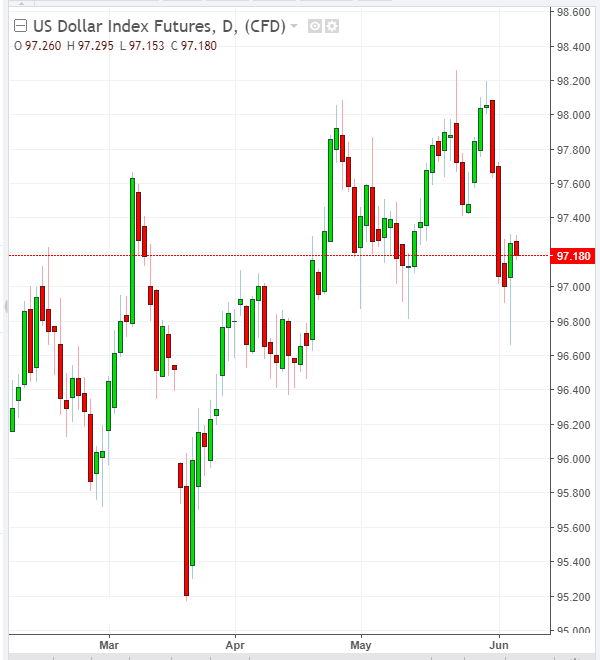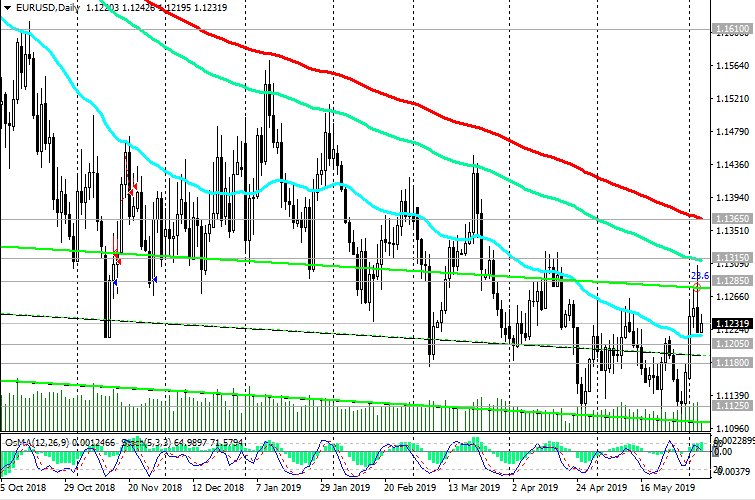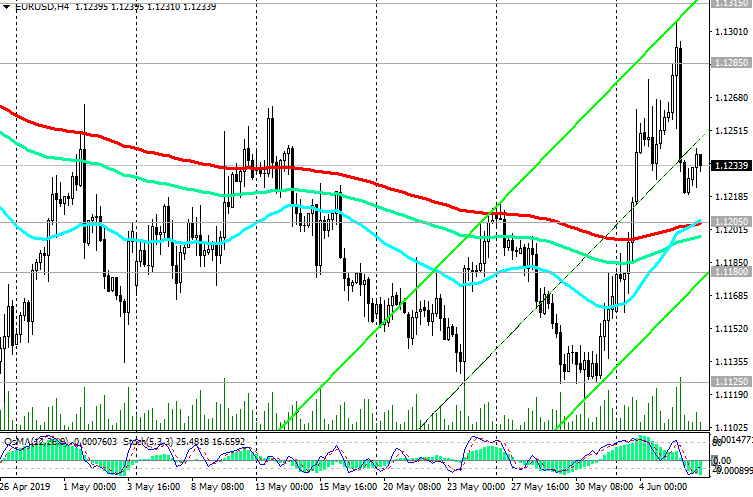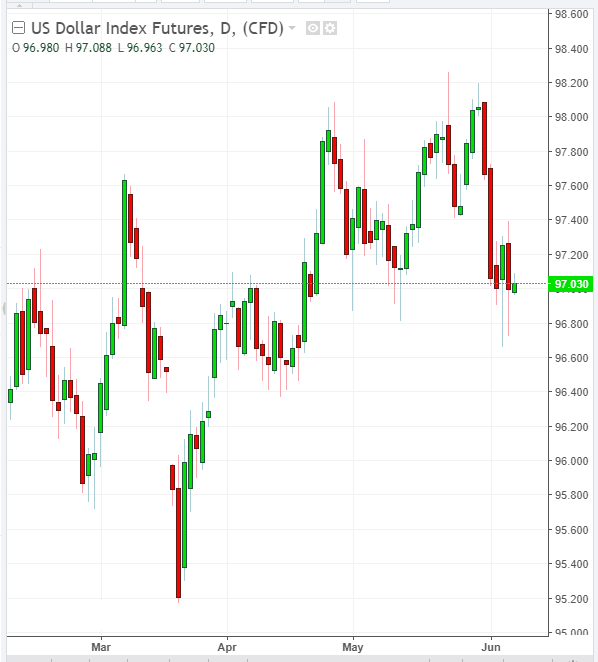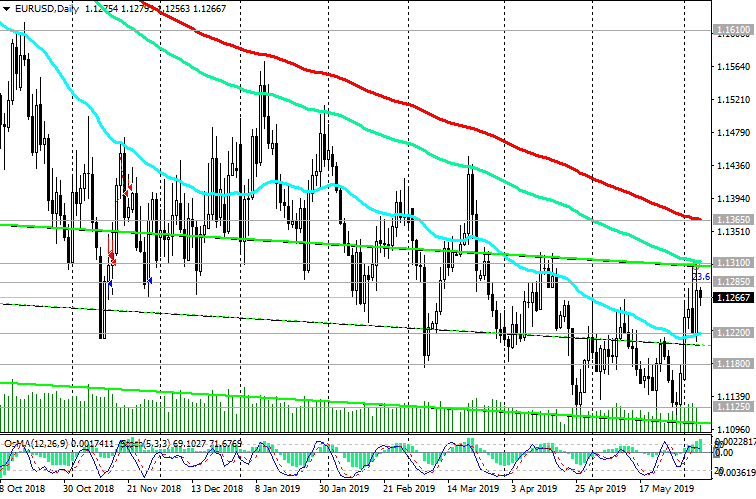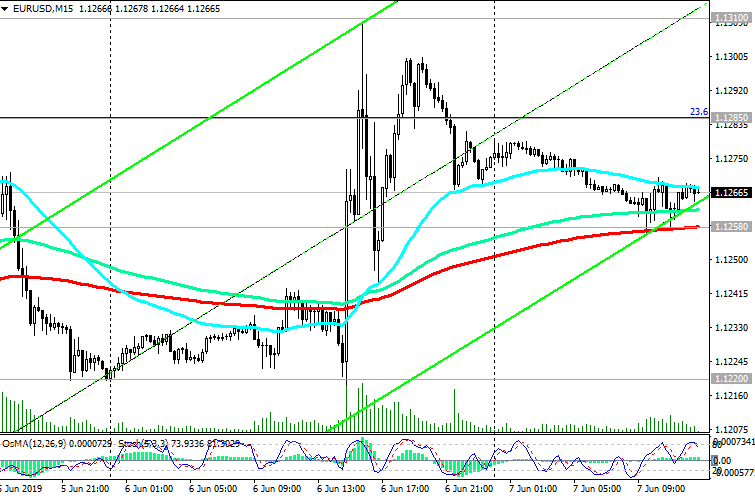TifiaFX
Established member
- Messages
- 641
- Likes
- 0
S&P500: Current Dynamics
05/13/2019
Despite negotiations, on Friday the White House raised customs duties on Chinese goods worth $ 200 billion from 10% to 25%. Moreover, the USA threatened to introduce additional duties for another 325 billion dollars, i.e. on all Chinese imports. Beijing said it would retaliate.
The aggravation of the trade conflict between the United States and China led to increased fluctuations in world markets. Last week, the US S & P 500 index suffered the most severe losses since the beginning of the year.
Many economists have warned that new duties and barrage trade barriers threaten the United States with a slowdown in economic growth.
On Monday, the major US stock indices are falling, and futures for the S & P500 index at the beginning of the European session is trading near the mark of 2848.0. Probably, the American session will also begin with the fall of the indices.
In case of fixation below the support level of 2860.0, the S & P500 will go to support level of 2770.0 (ЕМА200 on the daily chart). While the S & P500 index is trading above this key support level, long-term positive dynamics remain.
Nevertheless, purchases can be resumed after the S & P500 consolidates in the zone above the short-term resistance levels of 2883.0 (ЕМА200 on the 4-hour chart), 2890.0 (ЕМА200 on the 1-hour chart).
The indicators OsMA and Stochastic on the daily, 4-hour, 1-hour charts turned to the short positions, signaling a likely continuation of the decline.
Support Levels: 2860.0, 2810.0, 2770.0, 2720.0
Resistance Levels: 2883.0, 2890.0, 2915.0, 2937.0, 2959.0
Trading Recommendations
Sell Stop 2840.0. Stop Loss 2870.0. Objectives 2810.0, 2770.0, 2720.0
Buy Stop 2870.0. Stop Loss 2840.0. Objectives 2883.0, 2890.0, 2915.0, 2937.0, 2959.0
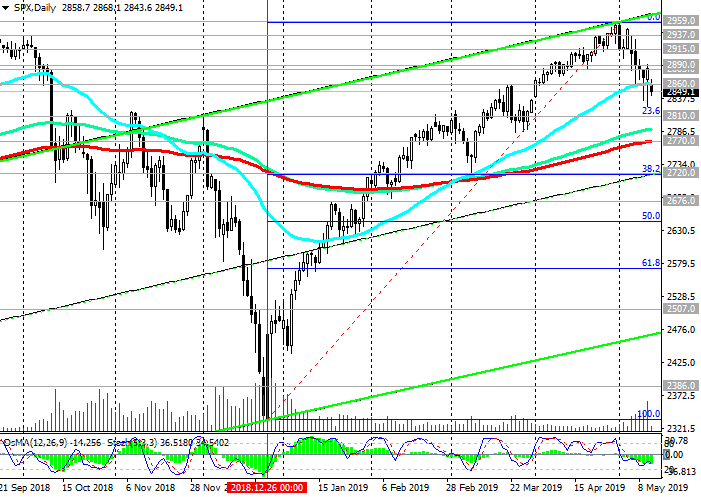
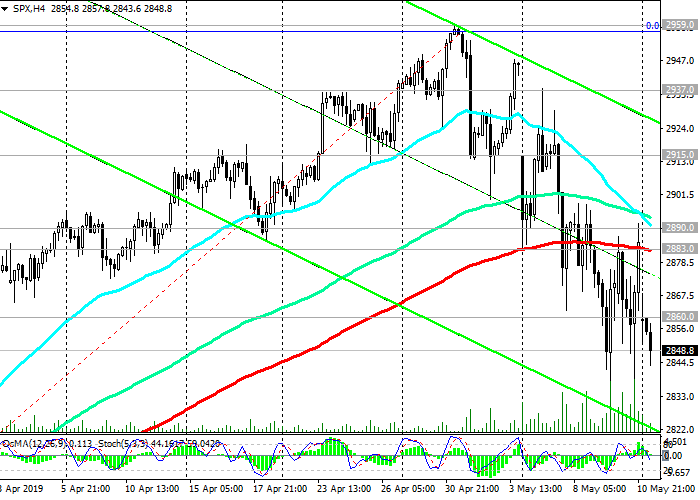
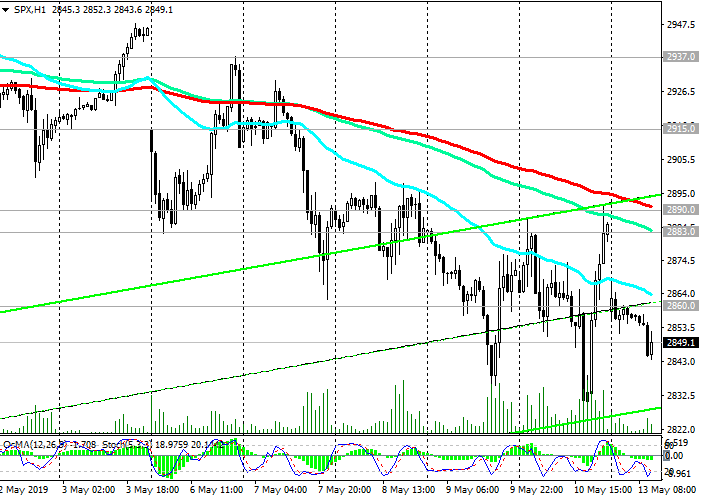
05/13/2019
Despite negotiations, on Friday the White House raised customs duties on Chinese goods worth $ 200 billion from 10% to 25%. Moreover, the USA threatened to introduce additional duties for another 325 billion dollars, i.e. on all Chinese imports. Beijing said it would retaliate.
The aggravation of the trade conflict between the United States and China led to increased fluctuations in world markets. Last week, the US S & P 500 index suffered the most severe losses since the beginning of the year.
Many economists have warned that new duties and barrage trade barriers threaten the United States with a slowdown in economic growth.
On Monday, the major US stock indices are falling, and futures for the S & P500 index at the beginning of the European session is trading near the mark of 2848.0. Probably, the American session will also begin with the fall of the indices.
In case of fixation below the support level of 2860.0, the S & P500 will go to support level of 2770.0 (ЕМА200 on the daily chart). While the S & P500 index is trading above this key support level, long-term positive dynamics remain.
Nevertheless, purchases can be resumed after the S & P500 consolidates in the zone above the short-term resistance levels of 2883.0 (ЕМА200 on the 4-hour chart), 2890.0 (ЕМА200 on the 1-hour chart).
The indicators OsMA and Stochastic on the daily, 4-hour, 1-hour charts turned to the short positions, signaling a likely continuation of the decline.
Support Levels: 2860.0, 2810.0, 2770.0, 2720.0
Resistance Levels: 2883.0, 2890.0, 2915.0, 2937.0, 2959.0
Trading Recommendations
Sell Stop 2840.0. Stop Loss 2870.0. Objectives 2810.0, 2770.0, 2720.0
Buy Stop 2870.0. Stop Loss 2840.0. Objectives 2883.0, 2890.0, 2915.0, 2937.0, 2959.0




